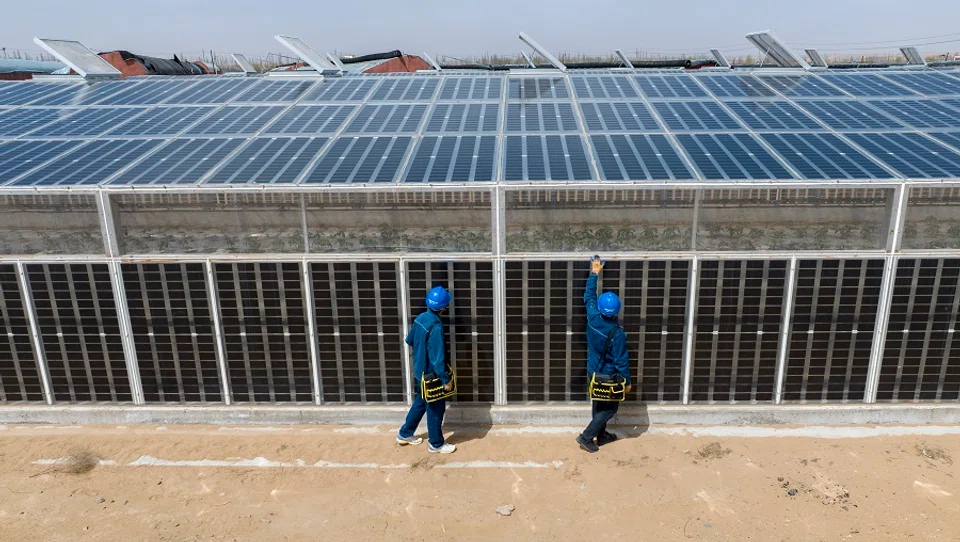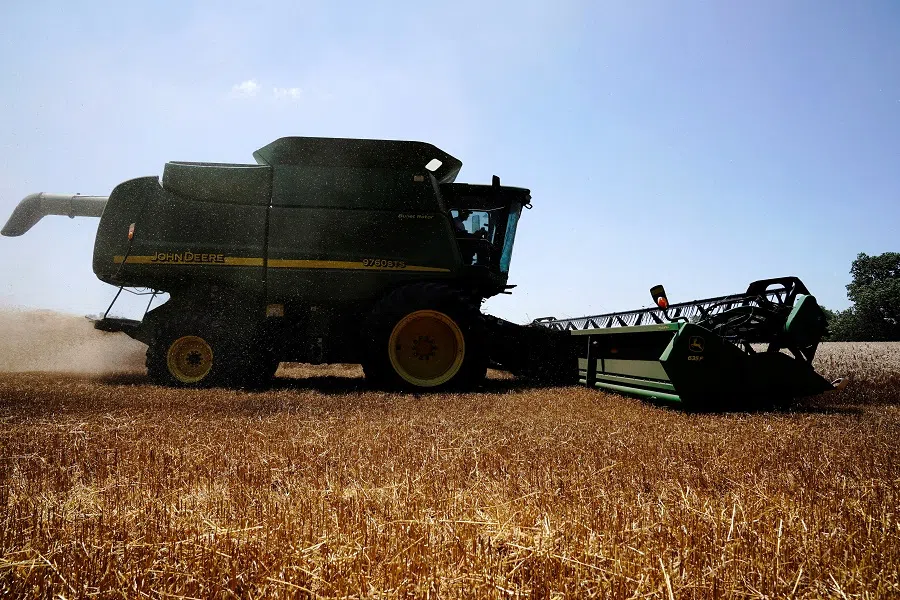Coding crops: How AI is sowing change in rural China
Artificial intelligence (AI) farming might sound like a futuristic concept, but it is fast becoming a reality in China. AI usage has spread to rural areas, where young, tech-savvy farmers are using it as a tool to increase agricultural efficiency and productivity. Academic Zhang Tiankan tells us more.

Since the launch of ChatGPT in late 2022, artificial intelligence (AI) in the form of large language models has captivated users worldwide. In China, following the release of DeepSeek-R1 by DeepSeek Corporation in 2025, a widespread “AI equality” movement has taken hold. Major tech giants like Tencent, Baidu, ByteDance and Alibaba have all integrated DeepSeek into their products, driving its monthly active user base to reach hundreds of millions.
This wave of AI expansion is no longer limited to urban intellectuals, white-collar workers, and students. Even in many rural villages, “wall advertisements” promoting AI have appeared. Tencent’s Yuanbao was the first to boldly declare: “Bring AI to the mountains and countryside.”
... Chinese farmers are beginning to experiment with this new “AI farming tool”. They use it to ask practical agricultural and livestock-related questions — postpartum care for sows, identifying pests and diseases, which crops yield more, how to understand fertiliser ratios...
A new agricultural revolution?
In this context, multiple media outlets have reported that more and more Chinese farmers are beginning to experiment with this new “AI farming tool”. They use it to ask practical agricultural and livestock-related questions — postpartum care for sows, identifying pests and diseases, which crops yield more, how to understand fertiliser ratios, what pesticide to use for wheat field infestations, or what to do when a chicken gets sick — by sending text or images.
In the past, it seemed unlikely that farmers would have any connection with AI. However, in recent years, the number of young people returning to their hometowns has grown. These individuals generally have received secondary or higher education and are familiar with smartphone functions, enabling rural Chinese society to cultivate the first group of “seed users” for AI farming tools. As long as AI can deliver real results and solve real problems, one can foresee its spread throughout the countryside, and these seed users will become key nodes in the diffusion of large language models.

From a historical perspective, the integration of AI into rural areas has the potential to become yet another major leap in productivity and an agricultural revolution — possibly even surpassing all previous agricultural revolutions in history.
Agriculture through the ages
Human agricultural production has evolved from slash-and-burn techniques to manual labour and the use of livestock and basic tools. With technological advancements, farming methods have significantly improved, gradually transitioning to mechanisation.
For instance, in 1701, the invention of the seed drill improved planting efficiency; in the 19th century, steam-powered traction engines were introduced to power grain threshers; and in the early 20th century, gasoline tractors allowed for faster plowing.
By the 1980s, global agriculture entered the era of “precision agriculture”, which involves tailoring fertiliser application based on the characteristics and variability of soil across different plots to achieve optimal crop yields, which called for data collection and analysis.
In the 1990s, with the invention of digital crop yield monitors and the increasing use of satellite-based Global Positioning Systems (GPS), agricultural technology underwent another revolution. Yield monitoring data was combined with GPS mapping to create yield maps, providing real-time insights into crop traits and quality during harvest. GPS also enabled another major breakthrough in agricultural technology: automation, such as the use of self-driving tractors.
Smart AI farming
Today, the rural application of AI has, on a basic level, enabled farmers to search for information via AI software. AI’s capabilities in analysis, summarisation, and comparison can provide farmers with simple and practical knowledge in agriculture and animal husbandry, guiding them in production and livestock management.
The wheat-monitoring robot is equipped with multispectral cameras, depth cameras, LiDAR (Light Detection and Ranging) and visible light sensors. It moves through fields 24/7, conducting intelligent inspections.

AI fundamentally relies on big data, from large language models to the Internet of Things, to support decision making in agriculture. Common applications include predictive analytics powered by machine learning, weather datasets and agricultural forecasting models. These tools assist in managing various agricultural processes, such as crop production, land use and supply chain planning.
Moreover, AI in agriculture includes tools that manage the entire crop life cycle. For instance, the Smart Agriculture Research Institute at Nanjing Agricultural University has developed two intelligent wheat-cultivation technologies: a wheat-monitoring robot and a remote sensing system for wheat planting conditions.
The wheat-monitoring robot is equipped with multispectral cameras, depth cameras, LiDAR (Light Detection and Ranging) and visible light sensors. It moves through fields 24/7, conducting intelligent inspections. The robot accurately assesses the field environment and crop growth conditions, calculates yield in real time, and displays a spatial distribution map of wheat yield on a large screen beside the field. This “digital clarity map” aids in planning for the next planting season.
A global shift towards AI usage in agriculture
The “AI goes rural” movement is not unique to China — Europe and America have also been exploring similar initiatives. For example, a winery in California has adopted a cloud-based farming system that gathers data from weather forecasts, satellite imagery, and sensors to measure the stress levels of grapevines. After comprehensive analysis, the system provides tailored irrigation recommendations for each vine. Following implementation, grape yields increased by 26%, while water usage decreased by 16%.
In less than one second, it identifies individual pigs based on features like their snouts, ears, eyes, and other facial traits. Based on this data, the AI system quickly dispenses a customised feed portion into the trough.

In the rural areas of southeast England, some farms are using AI for personalised pig farming. Before pigs enter the feeding trough, an AI system called Intellipig performs facial recognition. In less than one second, it identifies individual pigs based on features like their snouts, ears, eyes, and other facial traits. Based on this data, the AI system quickly dispenses a customised feed portion into the trough. After feeding, Intellipig continues analysing images of the pigs, searching for subtle signs of pain, illness, or emotional distress in their facial expressions.
Globally, AI is becoming more accessible and expanding into rural areas as part of a “technological equality movement” focused on discovering diverse user scenarios. These new applications, in turn, propel the development of the AI industry. Fundamentally, the purpose of AI development should be to function as a tool that enhances efficiency, addresses real-world problems and meets practical needs for humanity.





